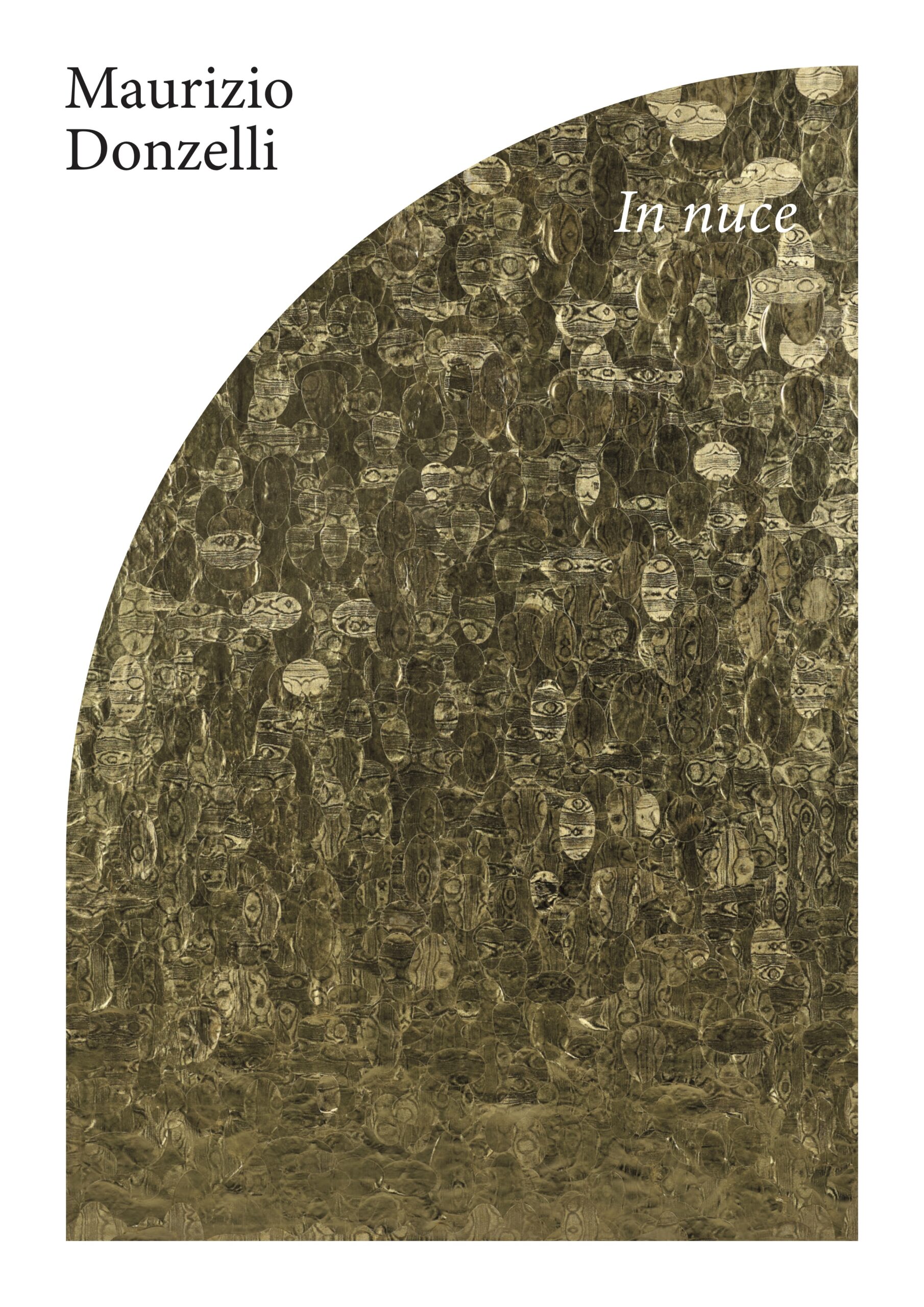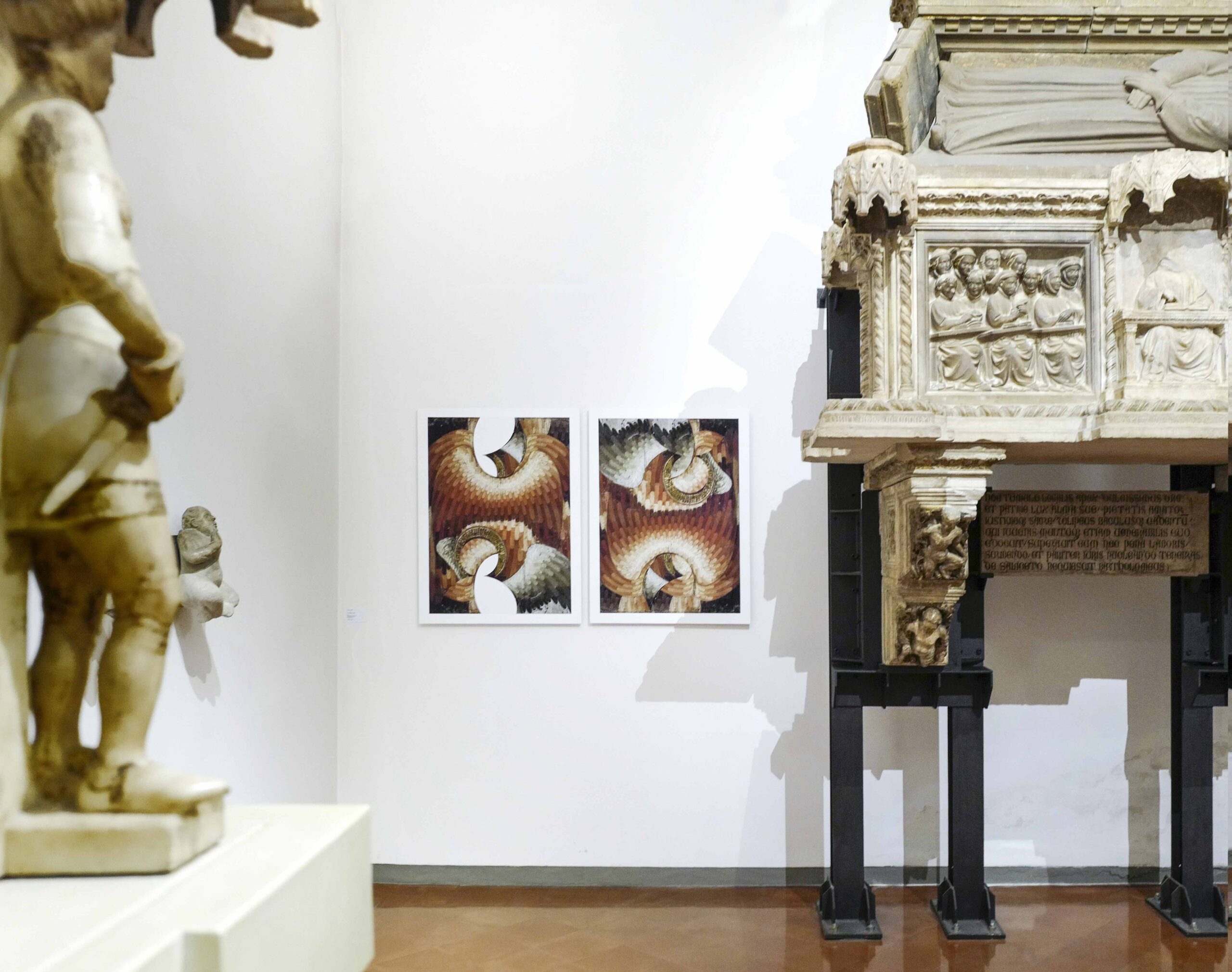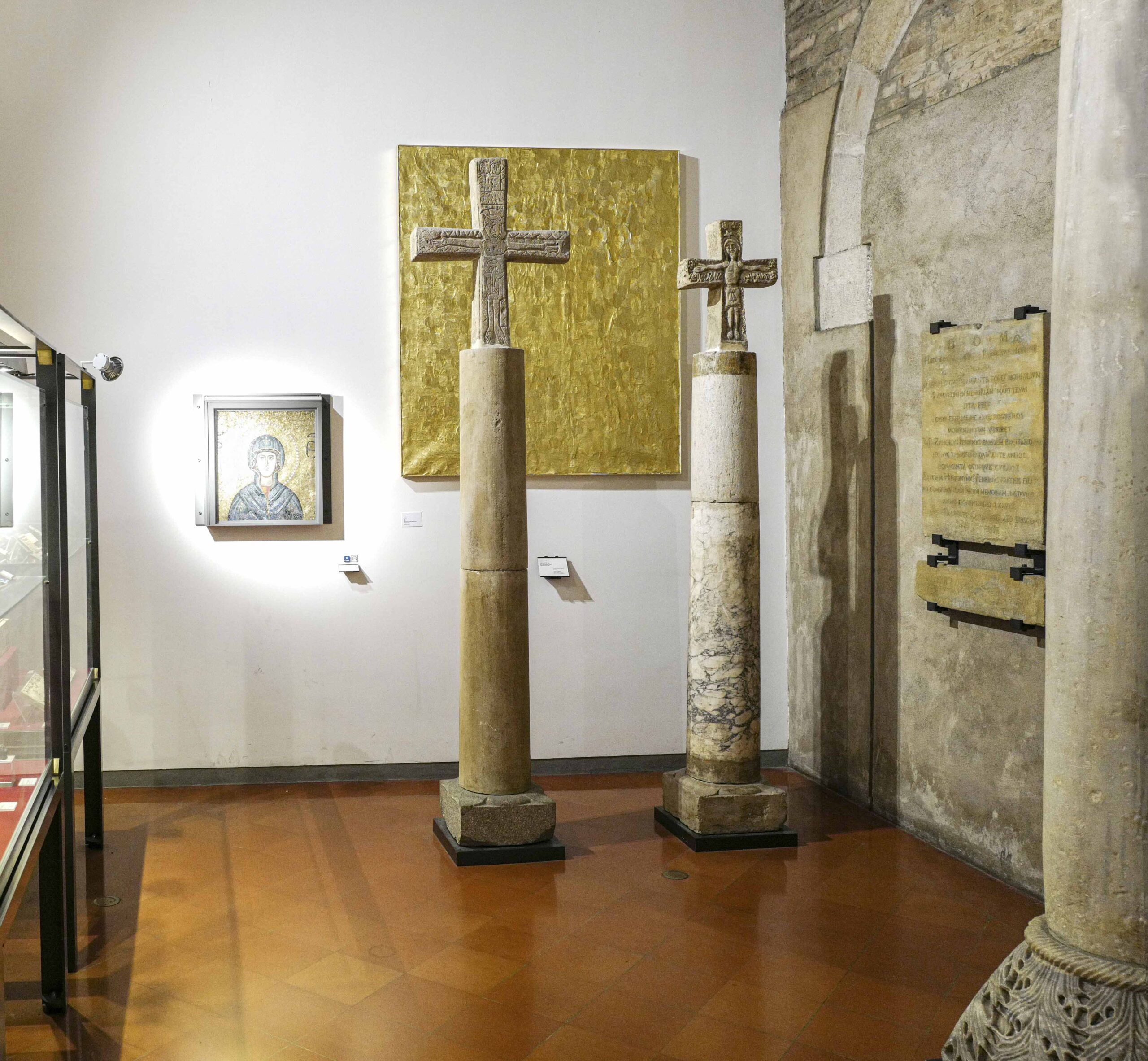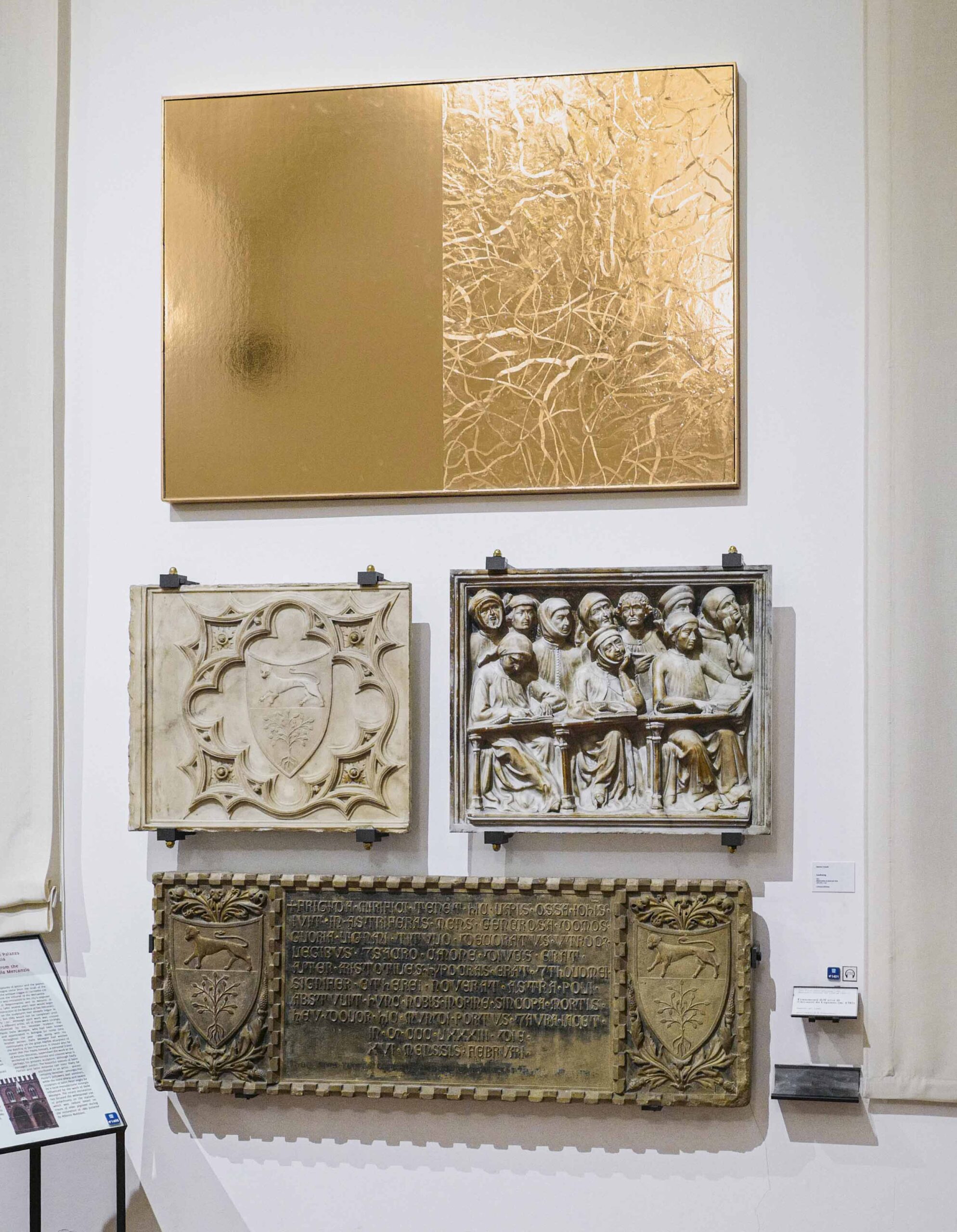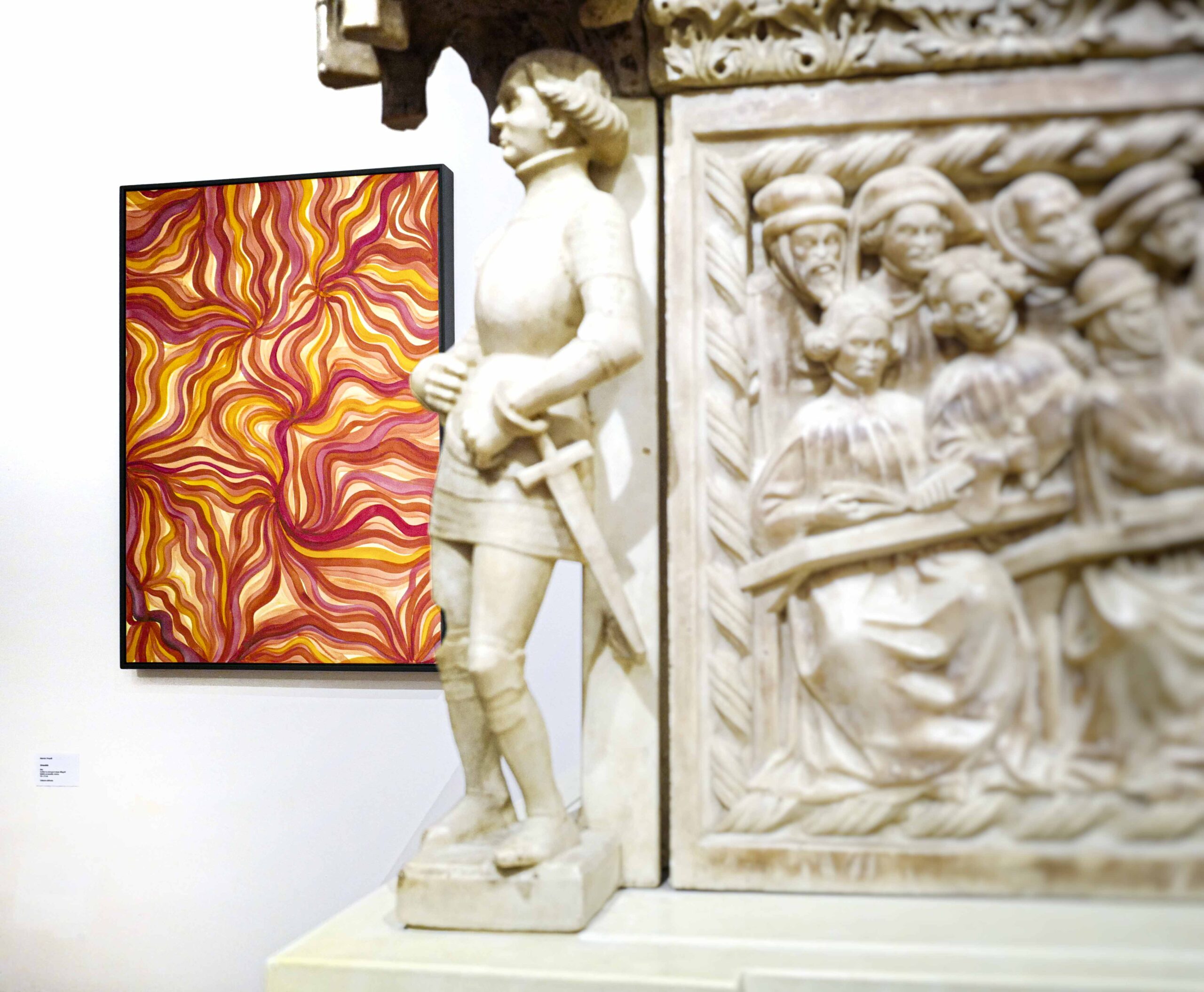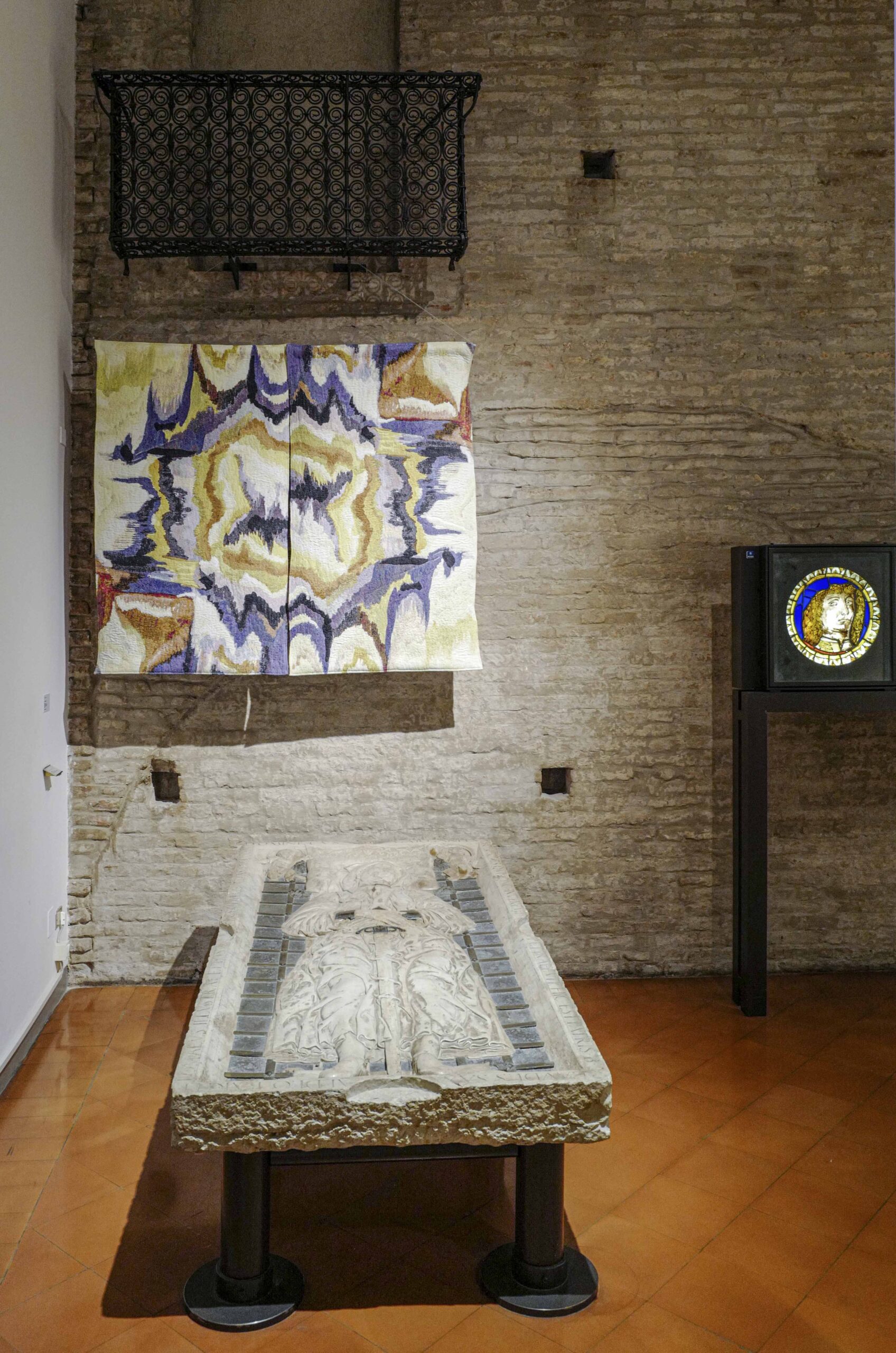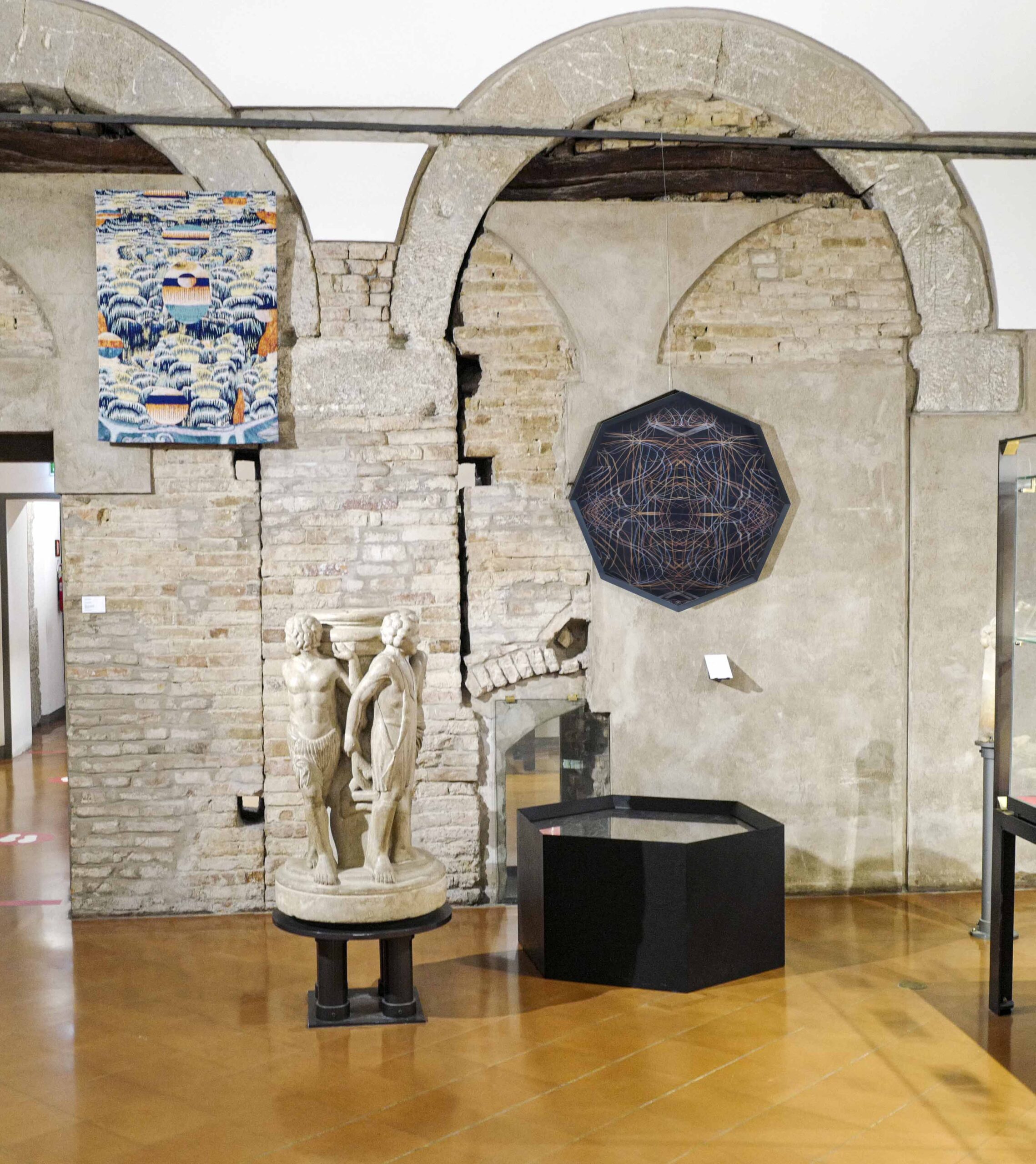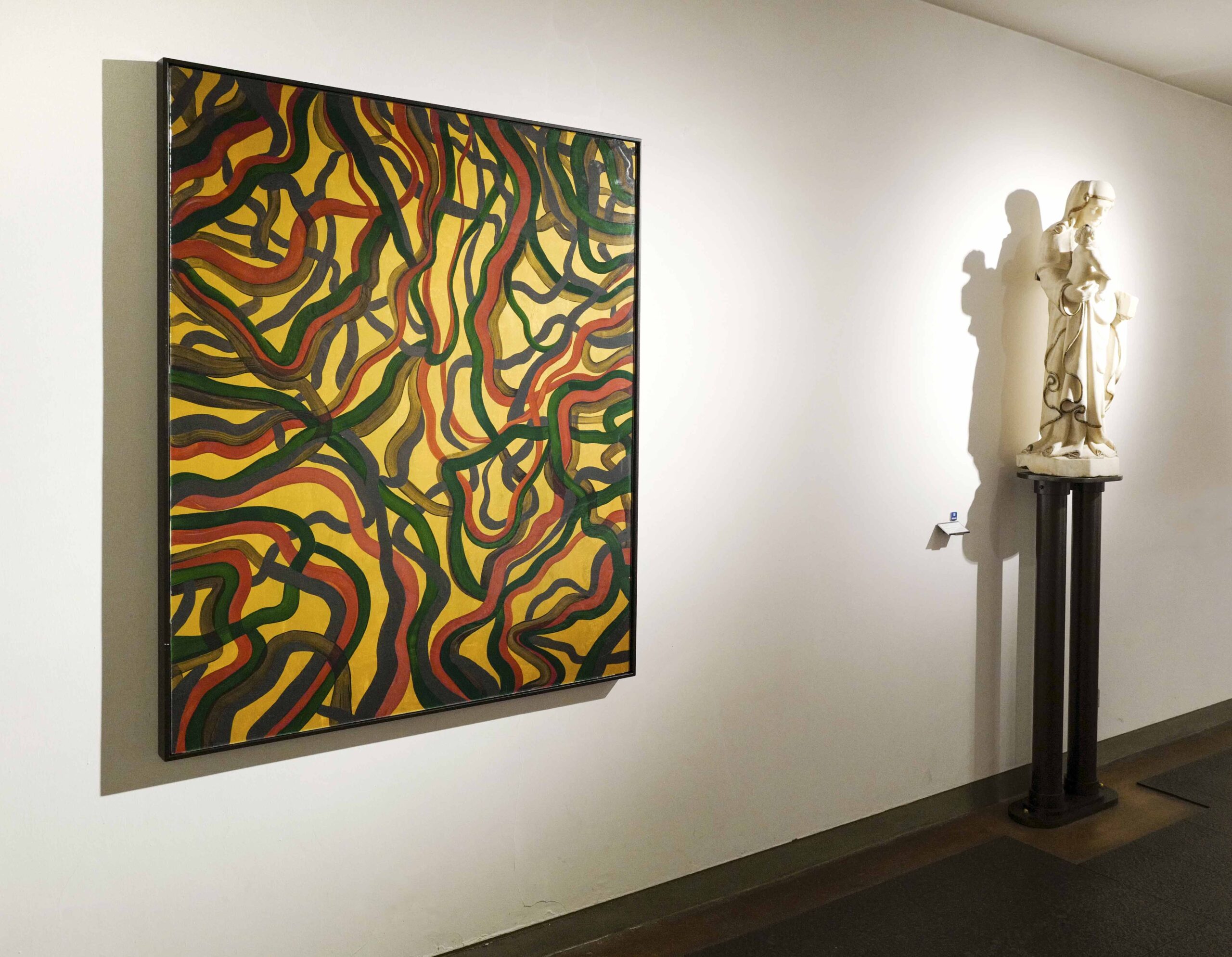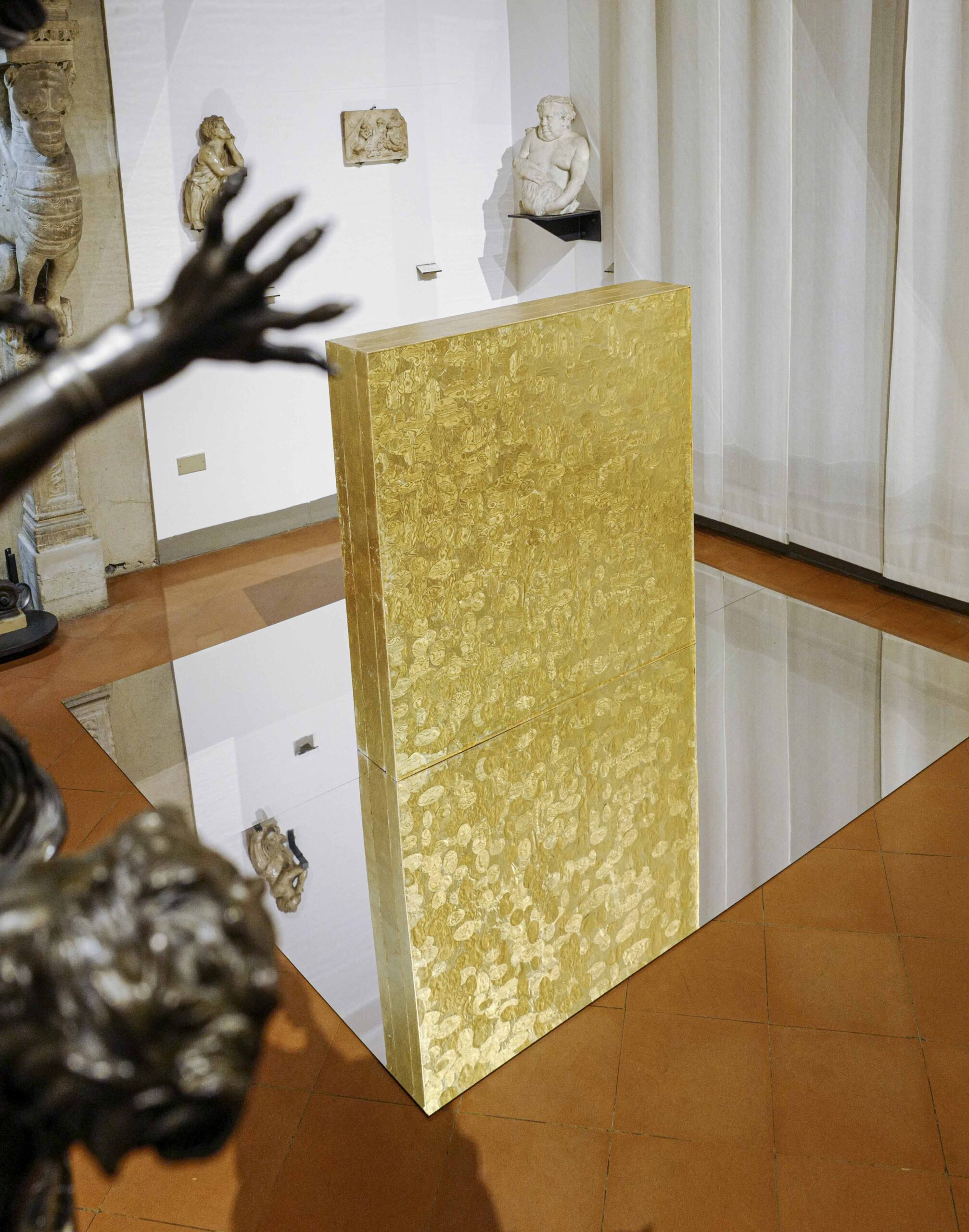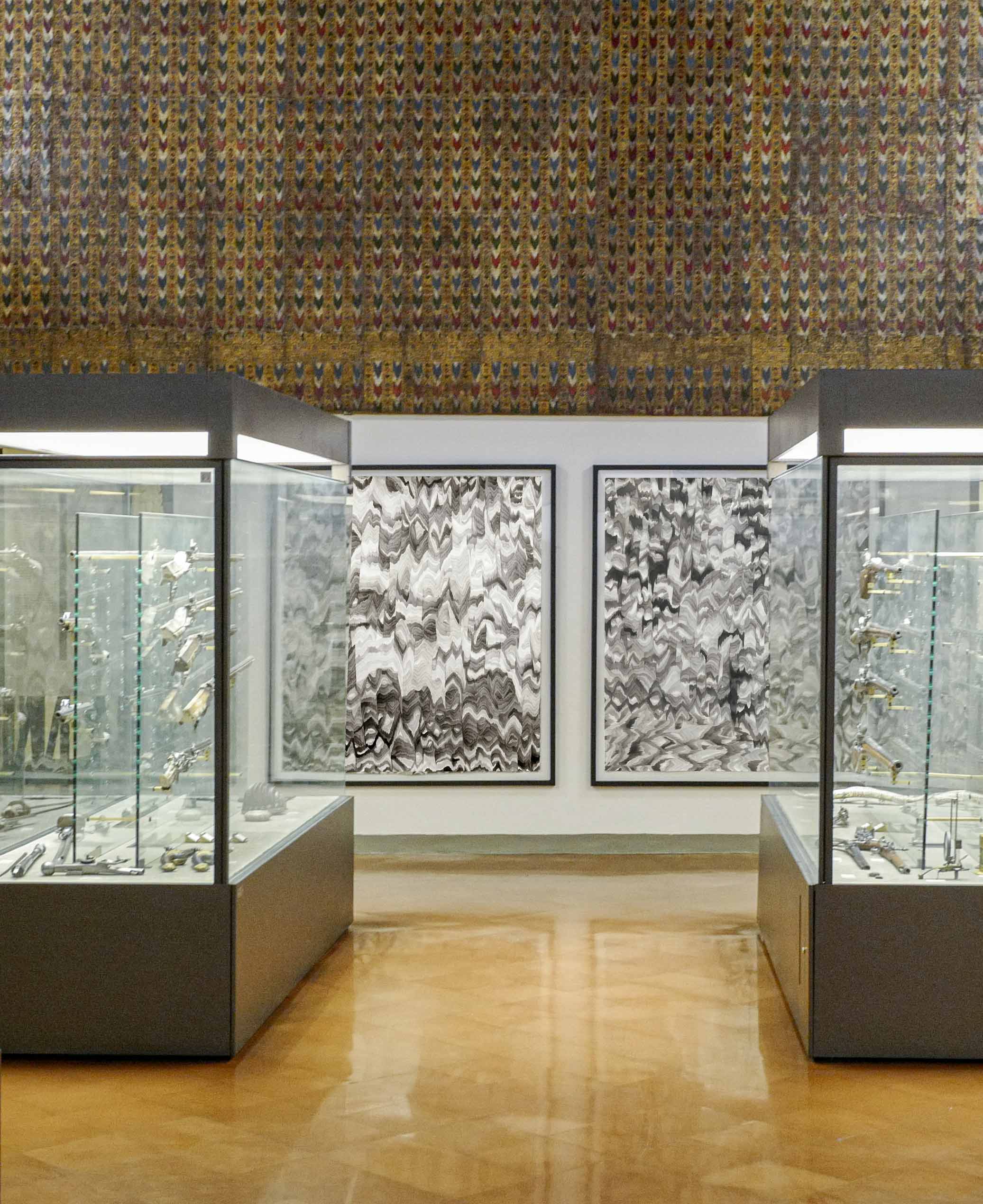05.05 – 19.09.2021 Museo Civico Medievale (Palazzo Ghisilardi), Bologna
05.05 – 19.09.2021 Museo Civico Medievale (Palazzo Ghisilardi), Bologna
Il progetto consiste in una mostra personale site-specific dell’artista Maurizio Donzelli (Brescia, 1958) in dialogo con le opere e gli ambienti del Museo Civico Medievale di Bologna: un percorso che invita lo spettatore alla scoperta di inattese relazioni tra i preziosi manufatti e le secolari architetture del museo e le tipologie dei lavori dell’artista, dagli Arazzi ai Mirrors, dai Disegni del Quasi ai recenti monocromi sull’oro, sino alla presentazione della nuova serie pittorica dei Notturni, nati come meditazione pittorica sull’isolamento e l’attesa, tra la fine del 2020 e la prima parte del 2021, ancora inediti. Diverse le opere di grande formato su carta che rievocano mappe celesti di stelle filamentose e brucianti, o si ispirano ai disegni di Cartesio sui magneti: onde e campi di attrazione che si propagano o interrompono come onde d’acqua quando si incontrano, metafore visuali delle reciproche analogie e risonanze tra le cose del mondo.
Il titolo della mostra, In nuce, evidenzia infatti come l’opera di Donzelli contenga embrionalmente un racconto visuale e iconico che può svilupparsi in direzioni diverse, potenzialmente infinite: un racconto nato dallo sguardo furtivo dell’artista e capace di unire, fondere e distinguere linguaggi e forme di tempi e geografie differenti. È questa la modalità di approccio e dialogo che l’artista mette in atto con il passato e con le sue iconografie, alle quali la sua opera si ispira in un andirivieni di emergenze e latenze di segni e accenni, affioramenti e sussurri visuali. Un prezioso e delicato rimando che si sviluppa come un ricamo lungo le sale del museo, chiedendo allo spettatore di trovare, a partire dalle proprie reminiscenze e attitudini visuali, relazioni e confronti tra le vestigia del passato e le contemporanee superfici pittoriche e materiche di Donzelli che si acquattano tra le sale o impattano eclatanti nell’ambiente.
Non è la prima volta che l’artista bresciano si confronta con l’antico: si ricordino le personali Metamorfosi, a Palazzo Fortuny, Venezia, 2012; Ad Altemps, tenutasi al Museo Nazionale Romano di Palazzo Altemps, Roma, 2015; la bi-personale con Aldo Grazzi a Palazzo Ducale a Mantova, nel 2017-2018; la collettiva METAMORPHOSIS a Villa Olmo, Como, nel contesto della trentesima edizione di MINIARTEXTIL, nel 2021; le precedenti collettive Intuition e Proportio, entrambe a Palazzo Fortuny, Venezia, nel 2017 e nel 2015.
Lasciandosi trasportare dalle suggestioni e dalle meraviglie dei tesori del museo bolognese e dai racconti che essi restituiscono sala dopo sala, Donzelli traccia ipotesi di un viaggio nel tempo e nello spazio, attraverso le forme, gli ornamenti, le iconografie stratificate, nascoste e latenti, dall’antichità alla contemporaneità.
Un linguaggio contemporaneo che si nutre delle stratificazioni e delle rimanenze del tempo, che rievoca e ritorna ciclicamente e sulle vestigia della storia e della cultura, senza limiti di geografie e di tempi: un lavoro che perfettamente si iscrive nella cornice altrettanto stratificata del Museo Civico Medievale, in una tensione dialettica con i suoi tesori preziosi e le sue vicende inscritte tra le mura e negli oggetti esposti.
Ilaria Bignotti
The project consists of a site-specific solo exhibition by the artist Maurizio Donzelli (Brescia, 1958) in dialogue with the works and environments of the Museo Civico Medievale in Bologna: a path that invites the viewer to discover unexpected relationships between the precious artifacts and the centuries-old architecture of the museum and the typologies of the artist’s works, from Tapestries to Mirrors, from the Disegni del Quasi to the recent monochromes on gold, up to the presentation of the new pictorial series of Notturni, born as a pictorial meditation on isolation and waiting, between the end of 2020 and the first part of 2021, still unpublished. Several large-format works on paper that evoke celestial maps of filamentous and burning stars, or inspired by Descartes’ drawings of magnets: waves and fields of attraction that propagate or interrupt each other like waves of water when they meet, visual metaphors of the reciprocal analogies and resonances between the things of the world.
The title of the exhibition, In nuce, in fact, highlights how Donzelli’s work embryonically contains a visual and iconic tale that can develop in different directions, potentially infinite: a tale born of the artist’s furtive gaze and capable of uniting, merging and distinguishing languages and forms of different times and geographies. This is the method of approach and dialogue that the artist employs with the past and its iconography, from which his work is inspired in a back-and-forth of emergencies and latencies of signs and hints, outcrops and visual whispers. A precious and delicate cross-reference that develops like an embroidery along the halls of the museum, asking the spectator to find, starting from his own reminiscences and visual attitudes, relations and comparisons between the vestiges of the past and the contemporary pictorial and material surfaces of Donzelli that crouch between the halls or impact strikingly in the environment.
It is not the first time that the Brescian artist confronts the ancient: remember the solo shows Metamorphosis, at Palazzo Fortuny, Venice, 2012; Ad Altemps, held at the Museo Nazionale Romano di Palazzo Altemps, Rome, 2015; the bi-personal with Aldo Grazzi at Palazzo Ducale in Mantua, in 2017-2018; the group show METAMORPHOSIS at Villa Olmo, Como, in the context of the 30th edition of MINIARTEXTIL, in 2021; the previous group shows Intuition and Proportio, both at Palazzo Fortuny, Venice, in 2017 and 2015.
Letting himself be carried away by the suggestions and the wonders of the treasures of the Bolognese museum and by the stories that they give back room after room, Donzelli traces hypotheses of a journey through time and space, through the forms, the ornaments, the stratified iconographies, hidden and latent, from antiquity to contemporaneity.
A contemporary language that feeds on the stratifications and remnants of time, that recalls and returns cyclically and on the vestiges of history and culture, without limits of geography and time: a work that perfectly fits into the equally stratified frame of the Museo Civico Medievale, in a dialectic tension with its precious treasures and its events inscribed within the walls and in the objects on display.
Ilaria Bignotti
